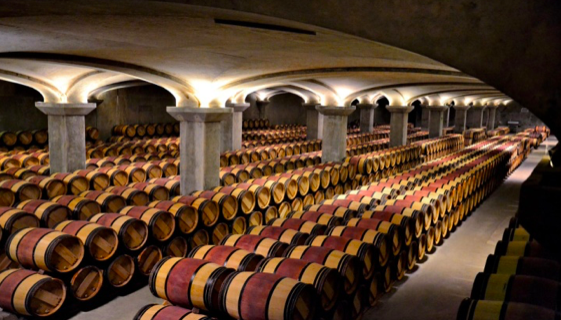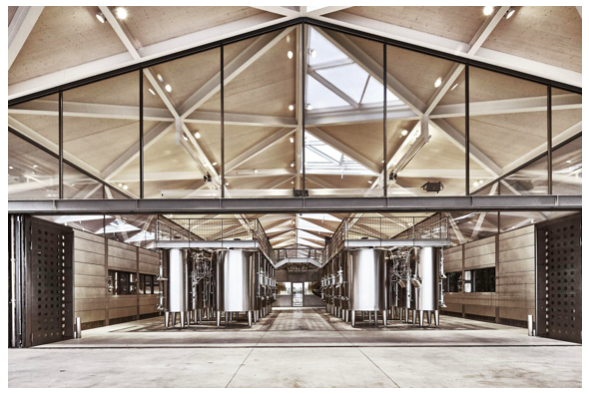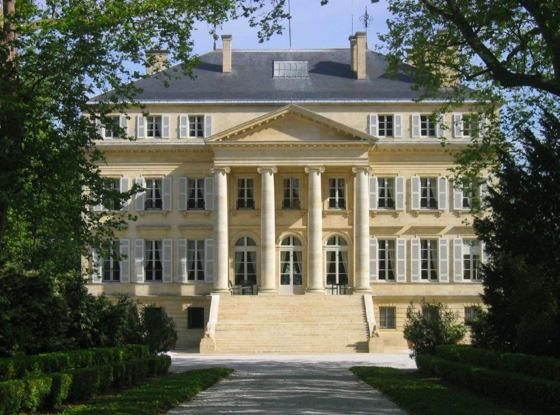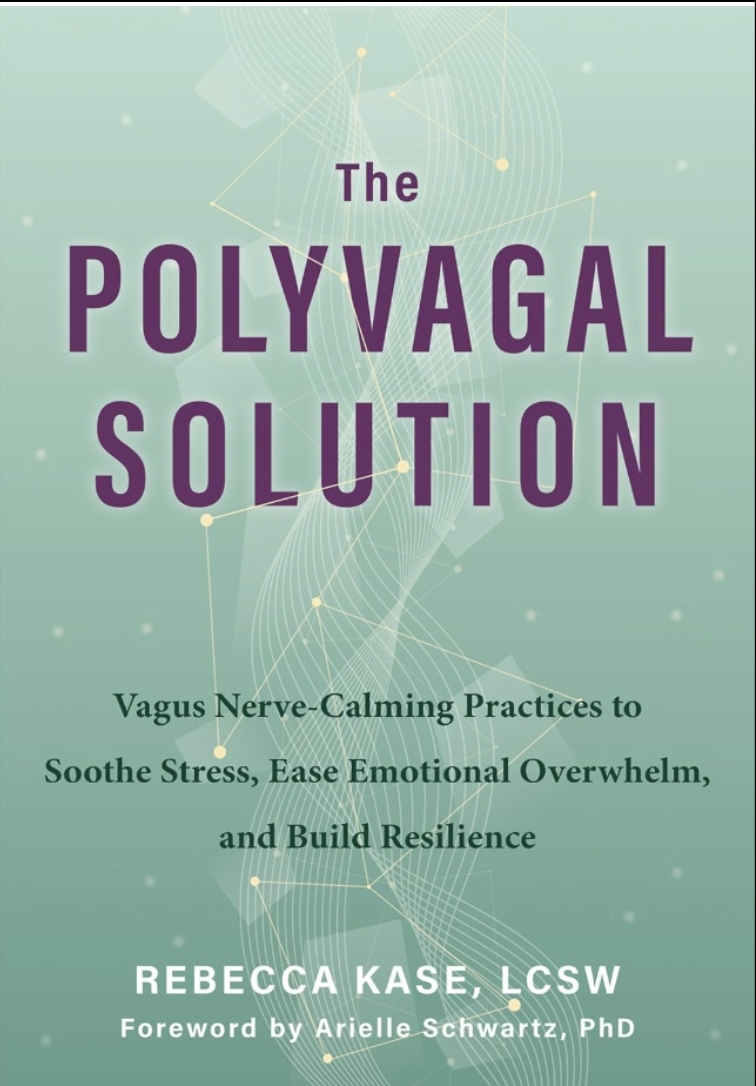Lifestyle
Charles Winn gives the Lowdown on the World’s ‘Fine Wine’ Capital

The majority of the world might remain in lockdown amid the ongoing coronavirus pandemic, but for some industries life must continue as normal, such as for ‘fine wine’. Whilst the rest of the world locks down, in Bordeaux – the fine wine capital of the world – producers are hard at work preparing their crops for the next season.
Geography
A port city on the Garonne River in southwestern France, Bordeaux is renowned globally for its famous wine-growing regions. A river runs directly through the region, and on the West side sits Gironde and Garonne. Typically, these regions are known for wines such as Sauvignon. On the East side of the river nestles Dordogne, known primarily for Merlot.
In total, Bordeaux has 57 grape-growing regions making it the biggest wine producer in France. Originally made famous for its popularity with kings, nowadays, Bordeaux and its chateaus are popular tourist attractions.
The Wines
As one of the biggest wine-makers in the world, you might expect Bordeaux to produce a diverse range of different type of wines. However, more than 90% of the wine produced here is actually red, with the region specifically producing Cabernet Sauvignon, Cabernet Franc, Merlot, Petit Verdot, Malbec and Carménère.
Having said this, in 2019 Bordeaux’s regulatory body approved four additional dark grape varieties to add to the list: Marselan, Touriga Nacional, Castets, and Arinarnoa.
Bordeaux’s First Growth wines (the term for a wine made specifically made in Bordeaux) are made by blending 70% Cabernet Sauvignon, 15% Cabernet Franc and 15% Merlot. In contrast, the White Bordeaux is made from Sémillon, Sauvignon Blanc and Muscadelle.

The History
Bordeaux’s wine-making history stretches back over many centuries. In 1855, the Association of Bordeaux Wine Merchants established official classification and certification of the wines after Emperor Napoleon III requested that they do so.
Ranking the wines from First Growths to Fifth Growths, the merchants evaluated market prices based on an evaluation of the previous years. They noticed that red wines which made the list came from the Médoc region, except for one: Château Haut-Brion from Graves.
Since this original classification in 1855, there have only been two changes. In 1856, Château Cantemerle was added as a Fifth Growth and in 1973, Château Mouton Rothschild was promoted from Second Growth to the elite First Growth classification. The latter change is a wine much loved and highly ranked by Charles Winn and its customers.

Château Margaux
Global flavour
It didn’t take long for the popularity of Bordeaux wine to grow all over the world. After King Henry II’s marriage to Eleanor of Aquitaine in 1152, an interest in wine from the Bordeaux region was prompted in England.
The marriage established the province of Aquitaine within France and England, and a new dark rosé wine was created, called ‘Claret’. This wine soon became the most common wine to be exported to Britain.
After the battle of Castillion in 1453, the Aquitaine region returned to the French. Since then, the word ‘Claret’ became anglicised and is still widely used today, due to the global popularity of the wine.

The exterior of the château
Lifestyle
The Missing Piece in Self-Help? Why This Book is Changing the Wellness Game

Self-help shelves are full of advice — some of it helpful, some of it recycled, and most of it focused on “mindset.” But Rebecca Kase, LCSW and founder of the Trauma Therapist Institute, is offering something different: a science-backed, body-first approach that explains why so many people feel struck, overwhelmed, or burned out — and what they can actually do about it.
A seasoned therapist and business leader, Kase has spent nearly two decades teaching others how to navigate life through the lens of the nervous system. Her newest book, “The Polyvagal Solution,” set to release in May 2025, aims to shake up the wellness space by shifting the focus away from willpower and onto biology. If success has felt out of reach — or if healing has always seemed like a vague concept — this book may be the missing link.
A new way to understand stress and healing
At the heart of Kase’s approach is polyvagal theory, a neuroscience-based framework that helps explain how our bodies respond to safety and threat. Developed by Dr. Stephen Porges, polyvagal theory has transformed the way many therapists understand trauma, but Kase is bringing this knowledge to a much wider audience.
“The body always tells the truth,” Kase says. “If you’re anxious, exhausted, or always in overdrive, your nervous system is asking for support, not more discipline.”
“The Polyvagal Solution” makes this complex theory digestible and actionable. Instead of promising quick fixes, Kase offers strategies for regulating the nervous system over time, including breathwork, movement, boundaries, and daily practices that better align with how the human body functions. It’s less about pushing through discomfort and more about learning to tune in to what the body needs.
From clinical expertise to business insight
What sets Kase apart isn’t just her deep understanding of trauma but how she blends that knowledge with real-world experience as a business owner and leader. As the founder of the Trauma Therapist Institute, she scaled her work into a thriving company, all while staying rooted in the values she teaches.
Kase has coached therapists, executives, and entrepreneurs who struggle with burnout, anxiety, or feeling disconnected from their work. Regardless of who she works with, though, her message remains consistent: the problem isn’t always mindset — it’s often regulation.
“Success that drains you isn’t success. It’s survival mode in disguise,” Kase explains. Her coaching programs go beyond traditional leadership training by teaching high achievers how to calm their nervous systems, enabling them to lead from a grounded place, not just grit.
Making the science personal
For all her clinical knowledge, Kase keeps things human. Her work doesn’t sound like a lecture but rather like a conversation with someone who gets it. That’s because she’s been through it herself: the long hours as a therapist, the emotional toll of supporting others, the realities of building a business while managing her own well-being.
That lived experience informs everything she does. Whether she’s speaking on stage, running a retreat, or sharing an anecdote on her podcast, Kase has a way of weaving humor and honesty into even the heaviest topics. Her ability to balance evidence-based practice with practical advice is part of what makes her voice so compelling.
Kase’s previous book, “Polyvagal-Informed EMDR,” earned respect from clinicians across the country. But “The Polyvagal Solution” reaches beyond the therapy community to anyone ready to understand how their body is shaping their behavior and how to create real, sustainable change.
Why this message matters
We’re in a moment where burnout is common and overwhelm feels normal. People are looking for answers, but many of the tools out there don’t address the deeper cause of those feelings.
That’s where Kase’s work lands differently. Instead of telling people to “think positive” or “try harder,” she teaches them how to regulate their own biology. And in doing so, she opens the door for deeper connection, better decision-making, and more energy for the things that matter.
As more workplaces begin to embrace trauma-informed leadership, more individuals are seeking solutions that go beyond talk therapy and motivational content. Kase meets that need with clarity, compassion, and a toolkit rooted in both science and humanity.
A grounded approach to lasting change
What makes “The Polyvagal Solution” stand out is its realism. It doesn’t ask readers to overhaul their lives but instead asks them to listen — to pay attention to how their bodies feel, how their stress patterns manifest, and how even small shifts in awareness can lead to significant results over time. Whether you’re a therapist, a team leader, or someone trying to feel more at ease in your own skin, this book offers a way forward that feels both grounded and achievable.
Rebecca Kase isn’t just adding another title to the self-help genre. She’s redefining it by reminding us that we don’t have to muscle our way through life. We just have to learn how to work with, not against, ourselves.
And maybe that’s the real game-changer we’ve been waiting for.
-

 Tech4 years ago
Tech4 years agoEffuel Reviews (2021) – Effuel ECO OBD2 Saves Fuel, and Reduce Gas Cost? Effuel Customer Reviews
-

 Tech6 years ago
Tech6 years agoBosch Power Tools India Launches ‘Cordless Matlab Bosch’ Campaign to Demonstrate the Power of Cordless
-

 Lifestyle6 years ago
Lifestyle6 years agoCatholic Cases App brings Church’s Moral Teachings to Androids and iPhones
-

 Lifestyle4 years ago
Lifestyle4 years agoEast Side Hype x Billionaire Boys Club. Hottest New Streetwear Releases in Utah.
-

 Tech7 years ago
Tech7 years agoCloud Buyers & Investors to Profit in the Future
-

 Lifestyle5 years ago
Lifestyle5 years agoThe Midas of Cosmetic Dermatology: Dr. Simon Ourian
-

 Health6 years ago
Health6 years agoCBDistillery Review: Is it a scam?
-

 Entertainment6 years ago
Entertainment6 years agoAvengers Endgame now Available on 123Movies for Download & Streaming for Free
